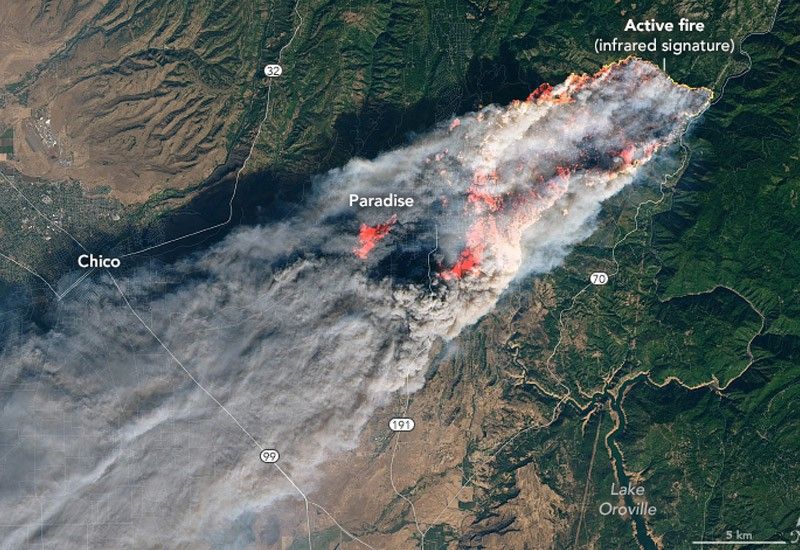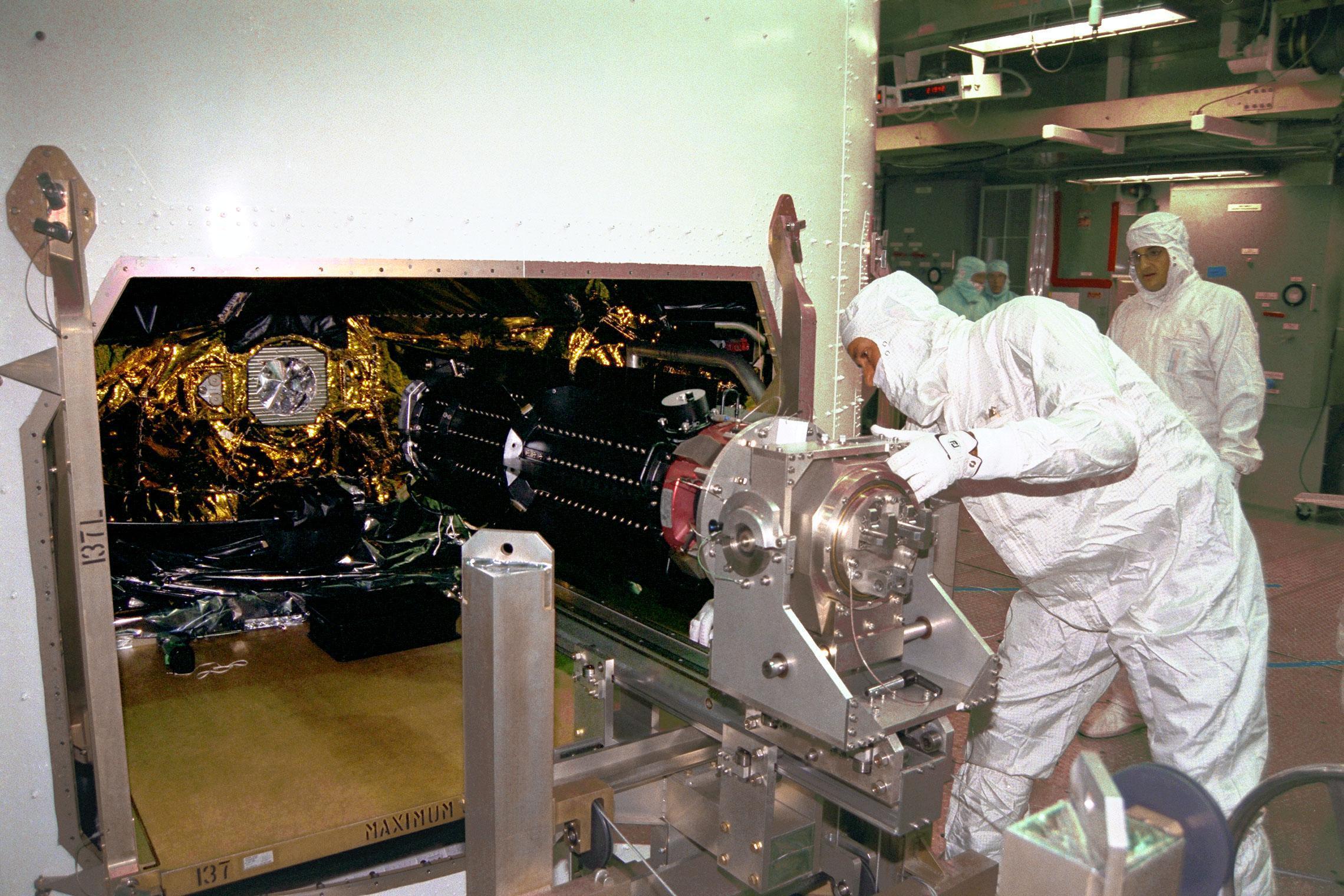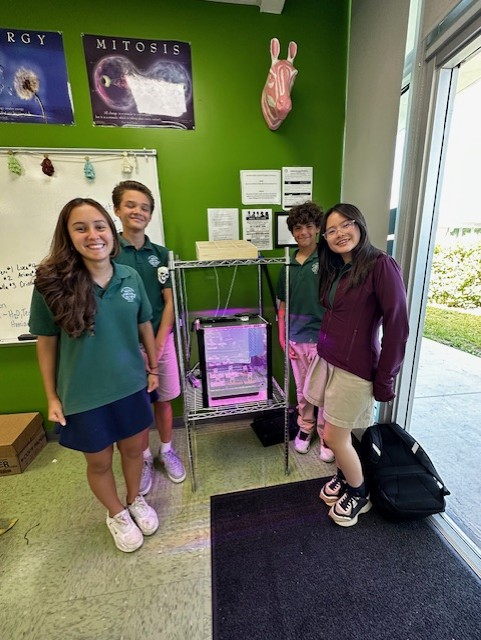The first uncrewed spaceflight test of a production Apollo Command and Service Module (CSM), and the first launch of a Saturn-IB rocket, took place on Feb. 26, 1966. The Apollo-Saturn (AS) 201 mission used the “all-up” philosophy that tested all components of a system in a single first flight. The suborbital test flight’s goals included demonstration of the Saturn-IB rocket’s capabiities, successful integration of rocket and spacecraft components, operation of the Apollo Service Module’s (SM) main engine, and effectivess of the Command Module’s (CM) heat shield. The Saturn-IB rocket lifted off successfully, and its two stages placed the Apollo spacecraft onto a suborbital trajectory. After spacecraft separation and reentry, the CM splashed down 5,264 miles downrange after a successful 37-minute test flight.
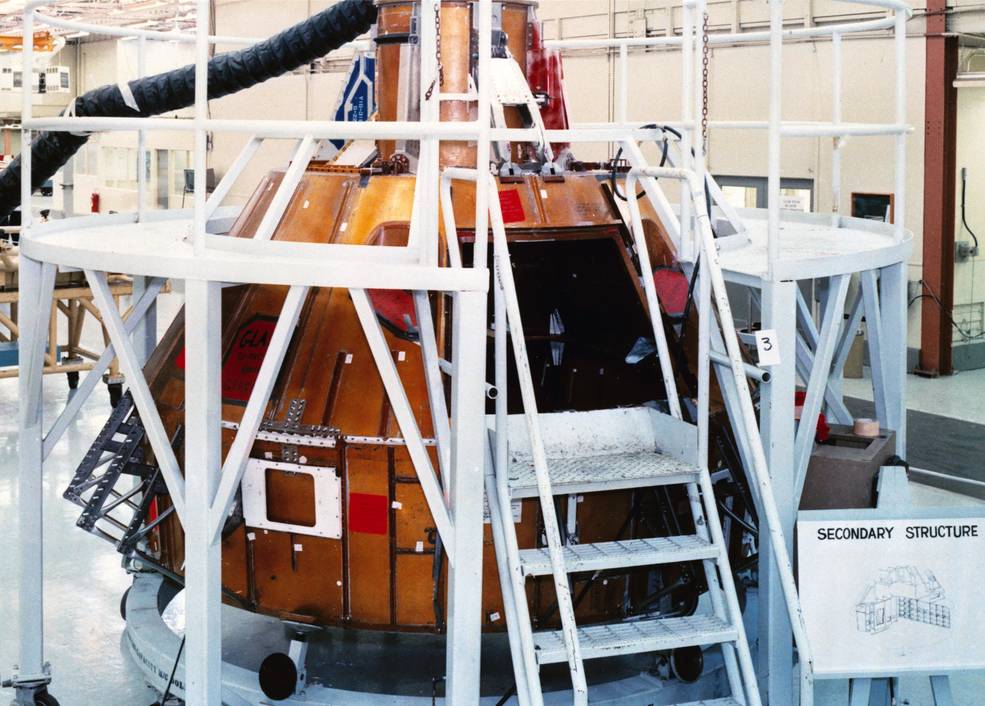
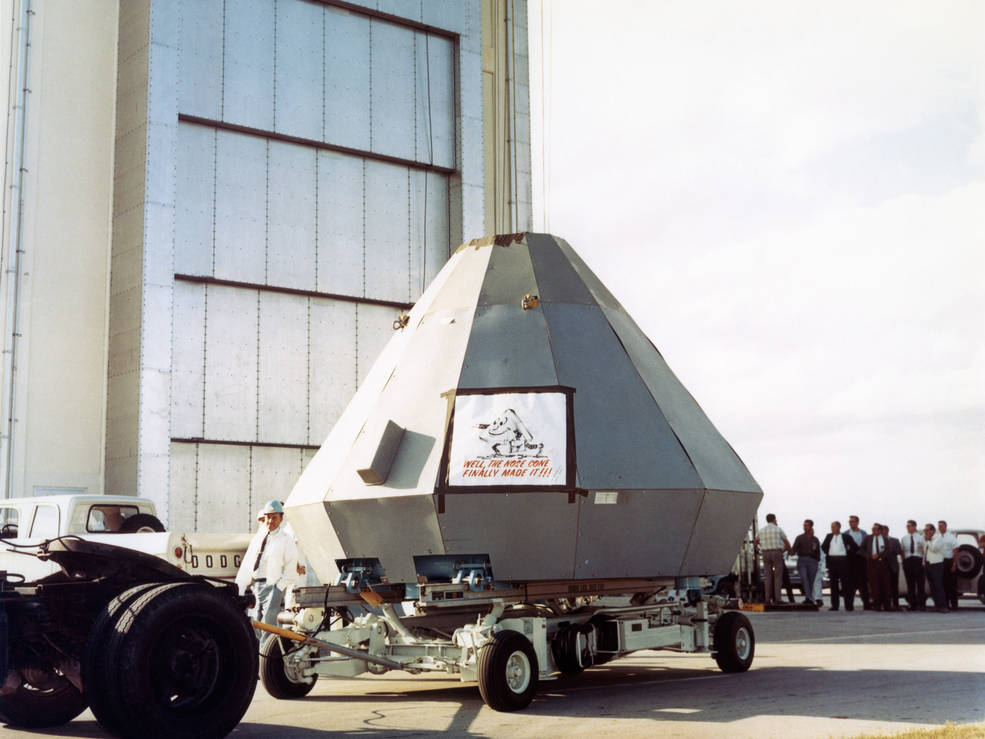
Left: Apollo Command Module (CM) 009 under construction at North American Aviation’s
plant in Downey, California in 1964. Right: Apollo CM-009 arriving at NASA’s Kenedy
Space Center in October 1965 in preparation for the AS-201 mission.
Occurring during the height of the Gemini Program, the AS-201 mission represented a cirtical milestone toward meeting President John F. Kennedy’s goal of landing a man on the Moon and returning him safely to Earth before the end of the decade of the 1960s. The first flight of the Saturn-IB rocket, the most powerful rocket up to that time with a first stage thrust of 1.6 million pounds, built on the 10 successful launches of its predecessor, the Saturn-I rocket, between 1961 and 1965. The Saturn-IB used eight upgraded H-1 engines on its S-IB first stage, but the most significant improvement over its predecessor involved the use of a new upper stage, called the S-IVB, powered by a single J-2 engine using liquid hydrogen as its fuel. The larger Saturn-V rocket used a version of the S-IVB stage to complete orbital insertion of the Apollo spacecraft, and more importantly, to send it out of Earth orbit and toward the Moon.
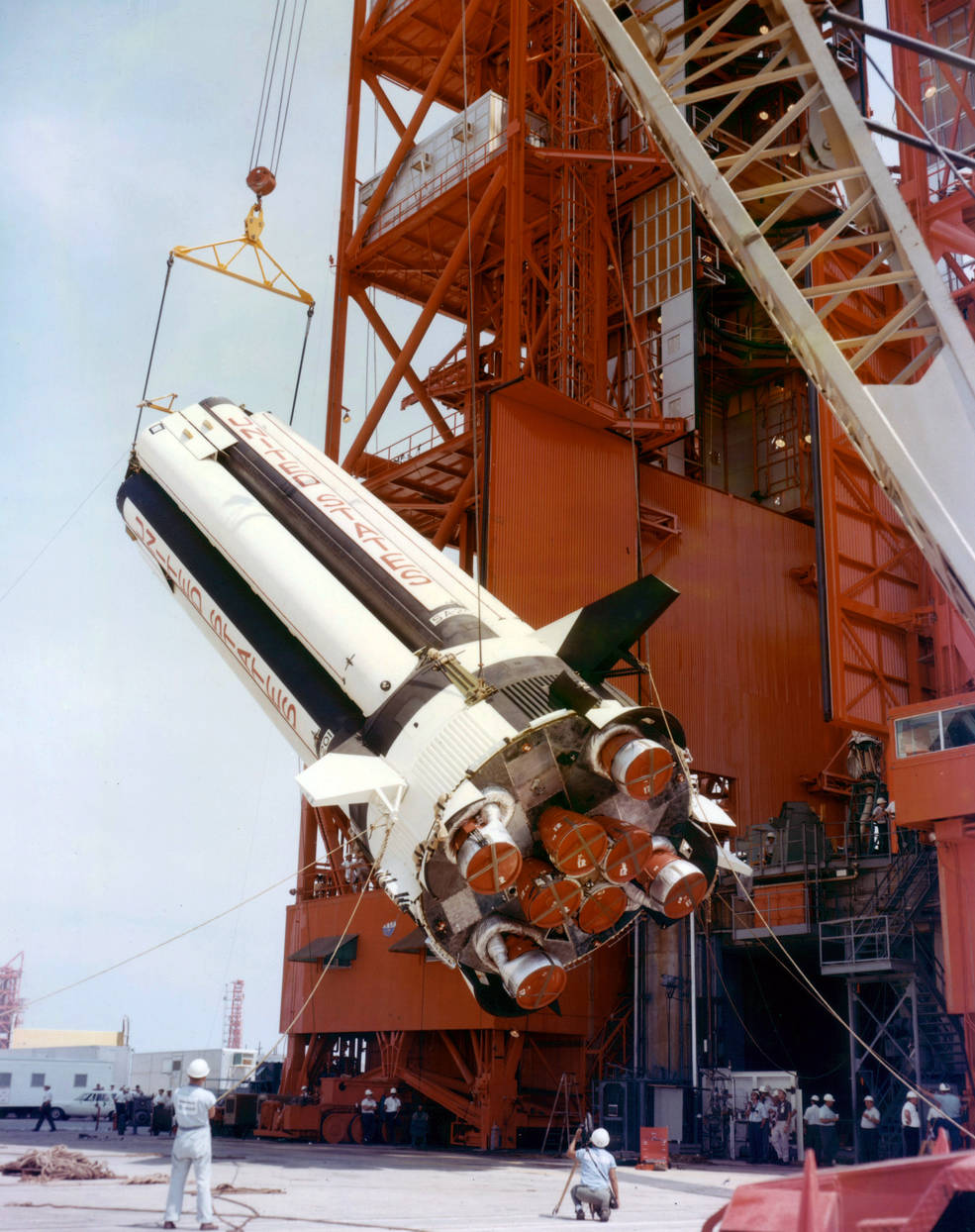
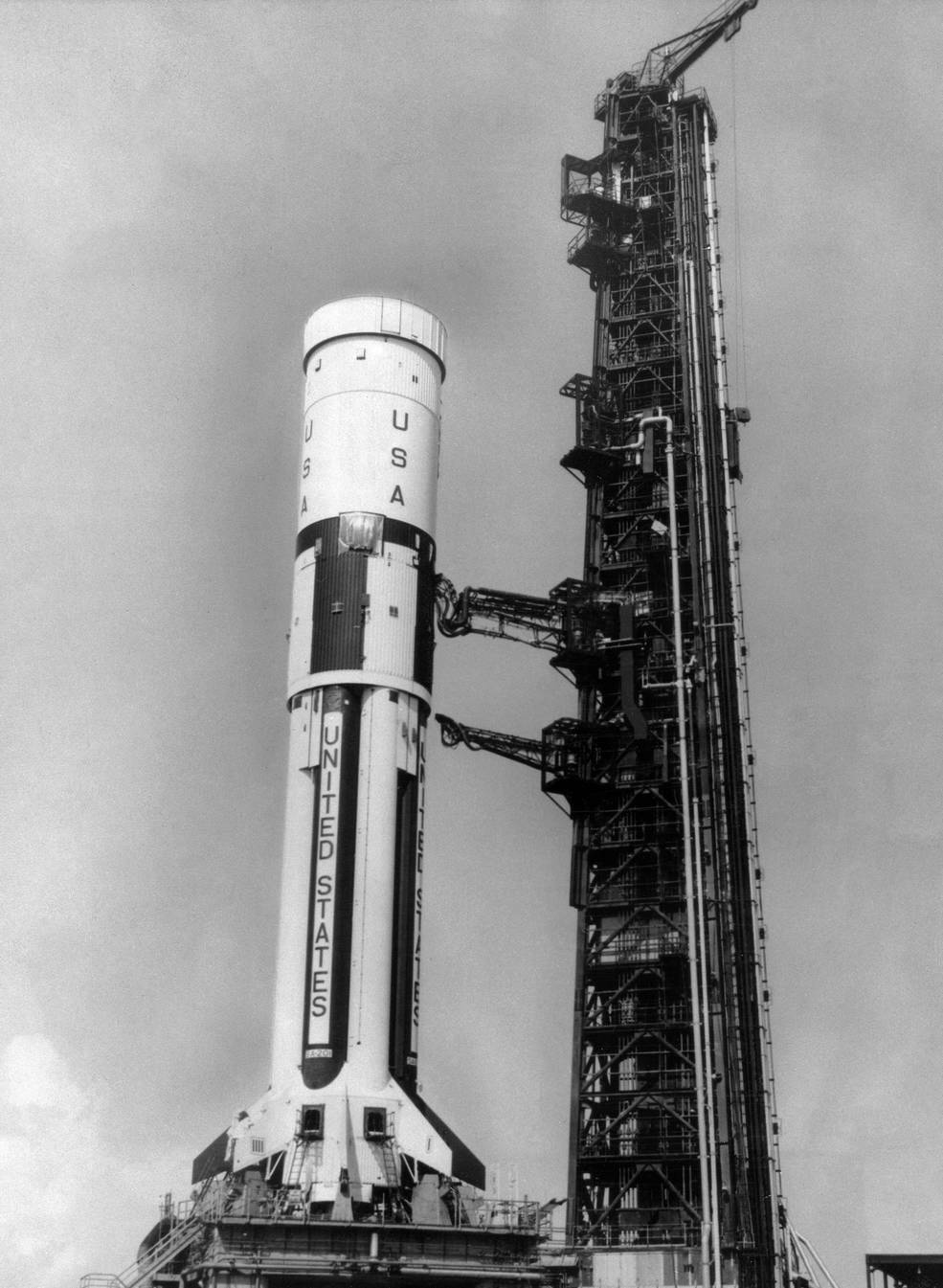

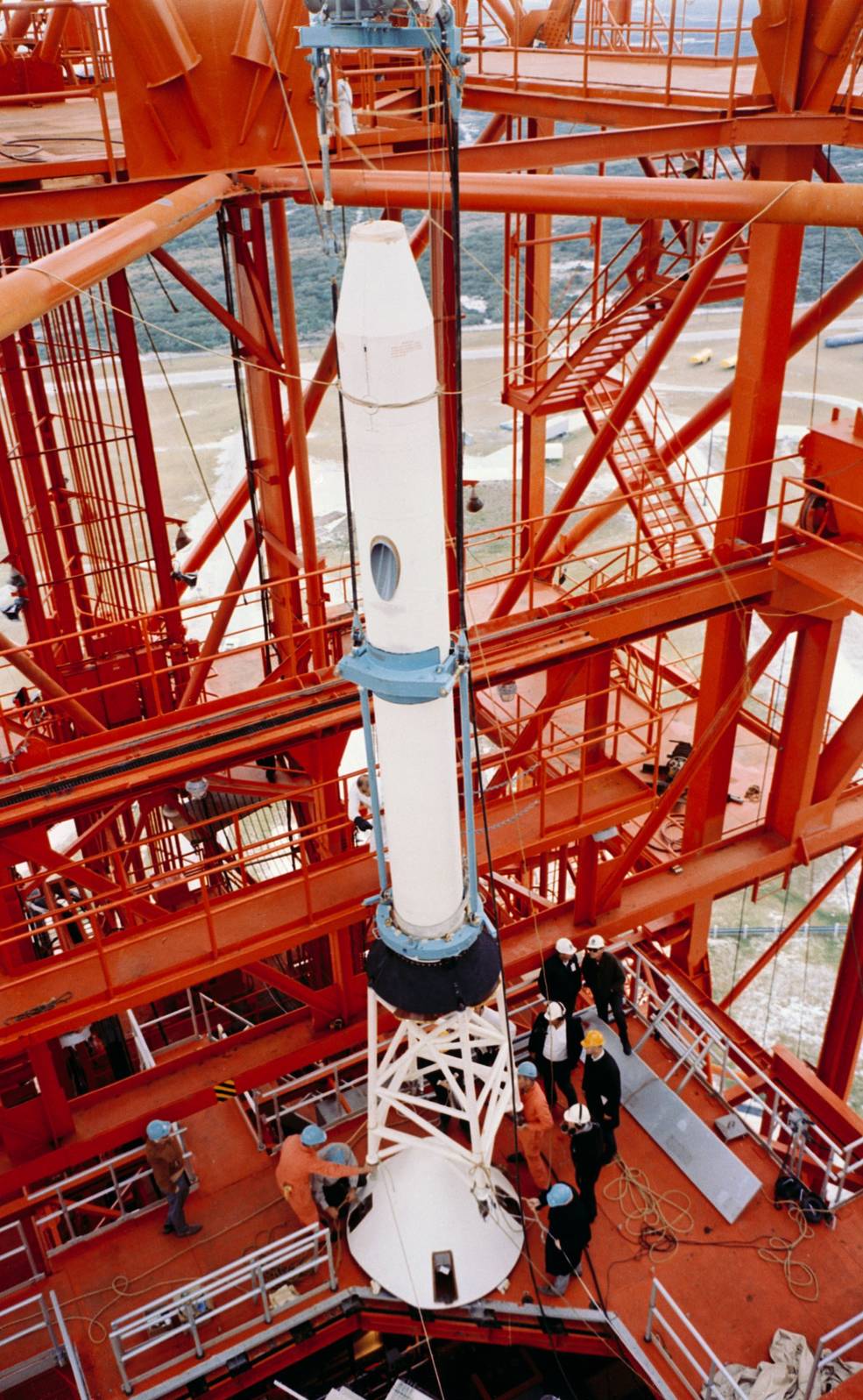
Left: Workers prepare to install the first stage of AS-201’s Saturn-IB on Launch Pad 34 at the Cape Kennedy Air Force Station, now the Cape Canaveral Space Force Station. Middle left: The first two stages of the Saturn-IB are stacked on the launch pad. Middle right: Workers lift the Apollo spacecraft to stack it onto the rocket’s second stage. Right: Workers lower the Launch Escape System atop the Apollo Command Module.
The S-IB first stage arrived at the Cape Kennedy Air Force Station (CKAFS), now the Cape Canaveral Space Force Station, in Florida on Aug. 14, 1965, and four days later workers mounted it on Launch Pad 34, refurbished since its last launch in 1963. The S-IVB second stage arrived on Sep. 19 and workers stacked it atop the first stage on Oct. 1. They added the instrument unit, used to control the rocket during its ascent, atop the second stage on Oct. 25. Construction of the AS-201 spacecarft, serial number 009, began in 1963 at the North American Aviation (NAA) plant in Downey, California. The CM arrived at NASA’s Kennedy Space Center’s (KSC) Manned Spacecraft Operations Building (MSOB) on Oct. 25, 1965, followed two days later by the SM. Following mating of the two modules and extensive testing in the MSOB, workers trucked the spacecraft to the launch pad and stacked it atop the rocket on Dec. 26. They added the final piece, the Launch Escape System (LES) tower on Jan. 24, 1966. Following a countdown demonstration and a flight readiness review, senior managers declared the rocket and spacecraft ready for its pioneering mission.
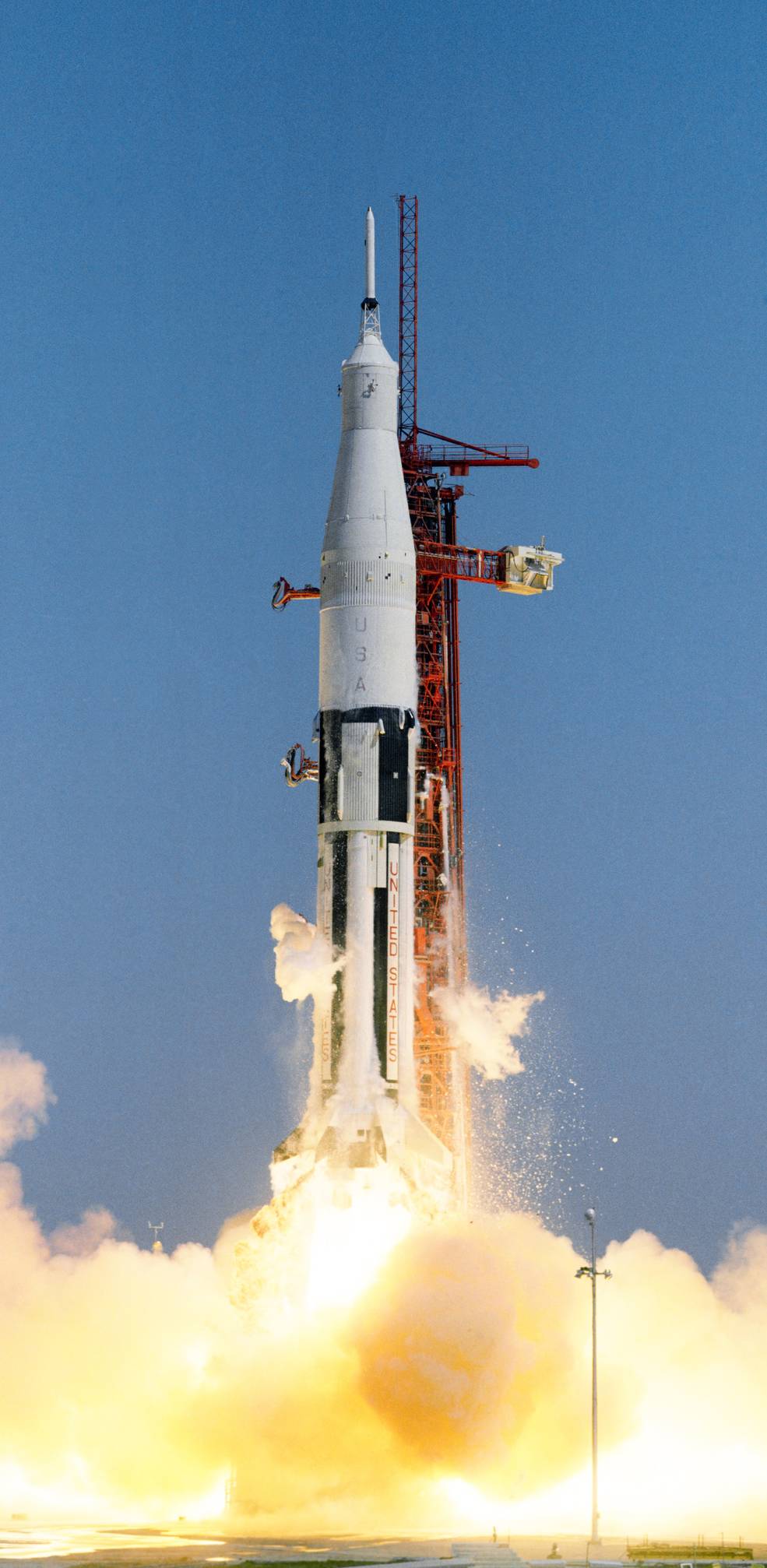
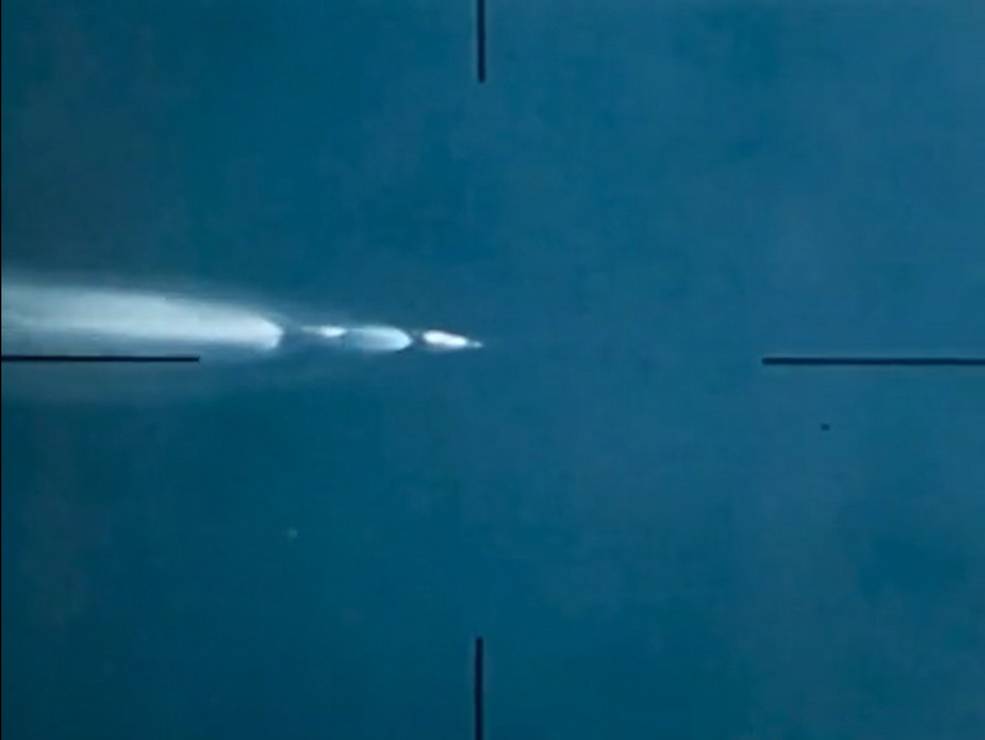
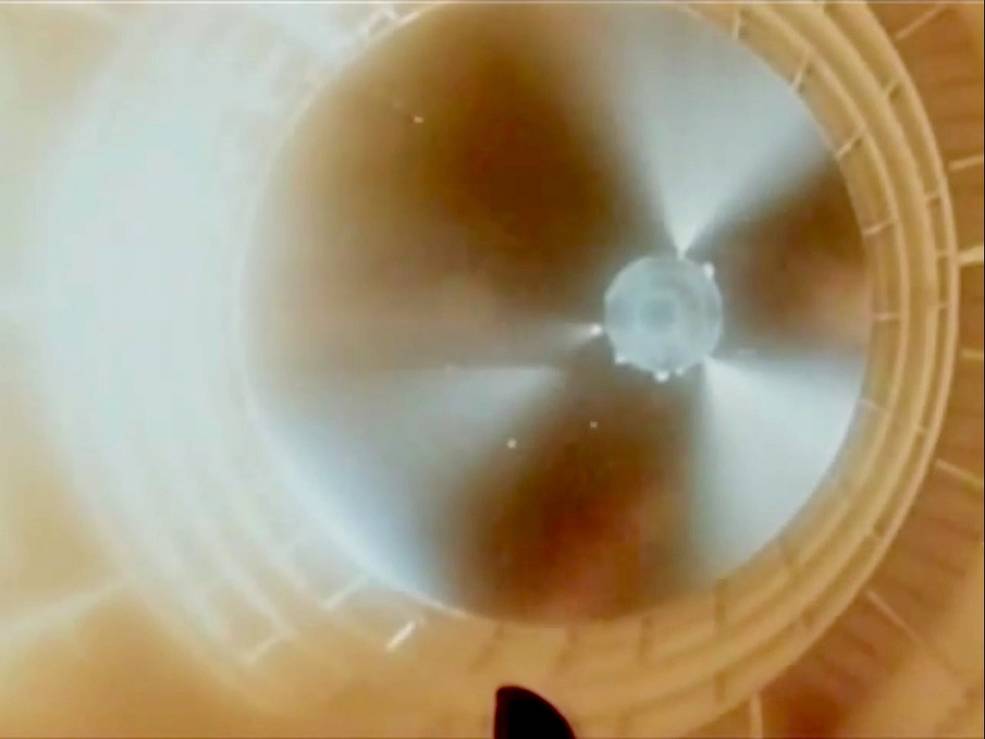
Left: Liftoff of the Saturn-IB on the AS-201 mission. Middle: A tracking camera captures the moment of stage separation. Right: Stage separation as viewed from a camera atop the first stage, showing the three ullage motors firing on the second stage prior to ignition of its J-2 engine.
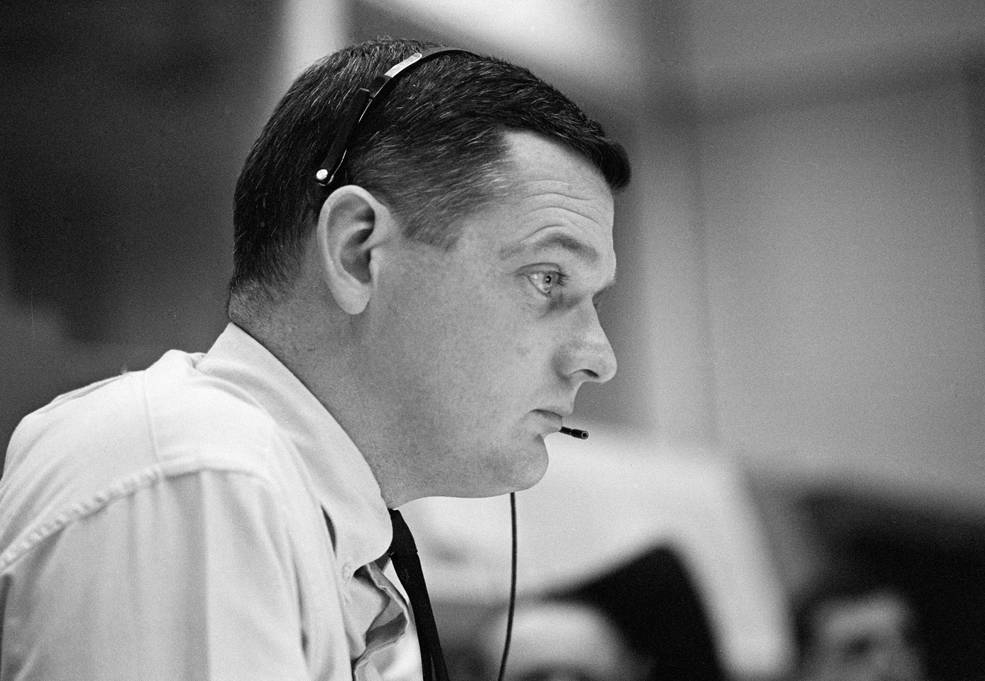
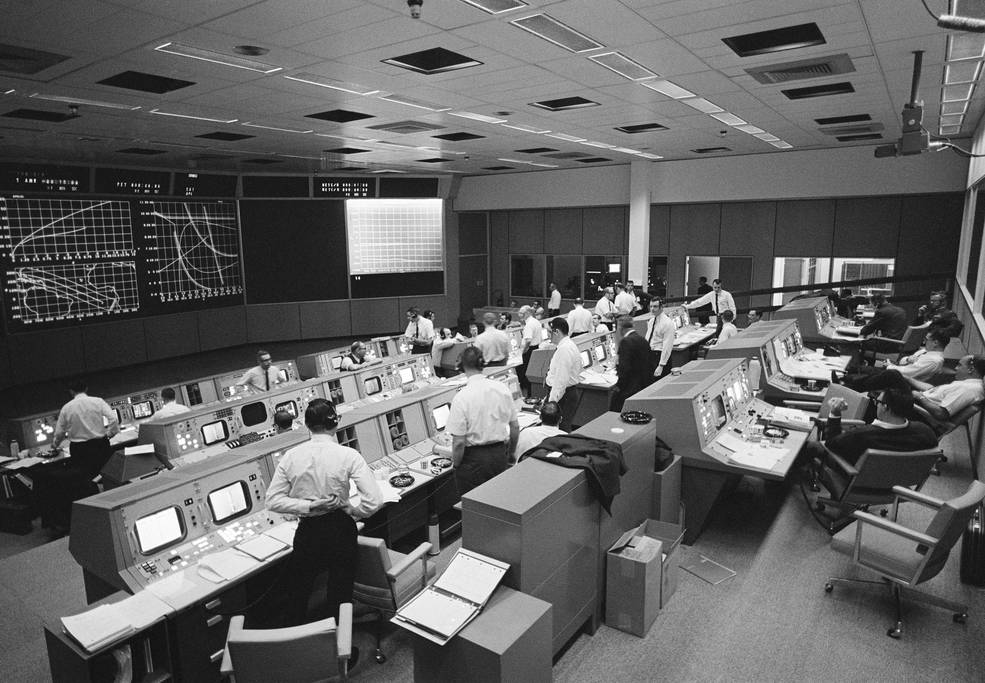
Left: In the Mission Control Center (MCC) at the Manned Spacecraft Center, now NASA’s Johnson Space Center in Houston, Flight Director Glynn S. Lunney monitors the progress of the AS-201 mission. Right: Overall view of the MCC during the AS-201 flight.
After several launch delays, AS-201 lifted off from Launch Pad 34 on Feb. 26, 1966. After the rocket cleared the launch tower, control of the mission shifted from CKAFS to the Mission Control Center (MCC) at the Manned Spacecraft Center (MSC), now NASA’s Johnson Space Center in Housotn. A team of engineers led by Flight Director Glynn S. Lunney monitored all aspectrs of the mission. Both stages of the rocket performed well, placing the Apollo CSM on its suborbital trajectory that peaked at an altitude of 303 miles. A camera mounted inside the top of the first stage, and later recovered at sea, recorded the fiery stage separation, firing of the S-IVB stage’s ullage motors used to settle propellants in their tanks, the ignition of the J-2 engine, and the jettison of the LES. After separation from the rocket, the Apollo spacecraft’s Service Propulsion System (SPS) engine ignitied to increase the capsule’s reentry velocity. Ingestion of helium into the propellant lines resulted in a lower than predicted thrust during this 104-second burn. The same problem affected a second 10-second burn to test the engine’s restart capability. The spacecraft then turned around, and the CM separated from the SM to begin its reentry sequence. Due to the underperformance of the SPS engine, the CM entered the atmosphere at a slightly slower velocity than planned. An electrical power system fault in the CM caused a loss of steering, with the capsule rolling during reentry. Despite these problems, the heat shield performed flawlessly. The spacecraft deployed its parachutes as planned and splashed down in the south Atlantic Ocean 200 miles west of Ascension Island and 46 miles from its intended target. Landing occurred 5,264 miles downrange after a largely successful 37-minute flight.
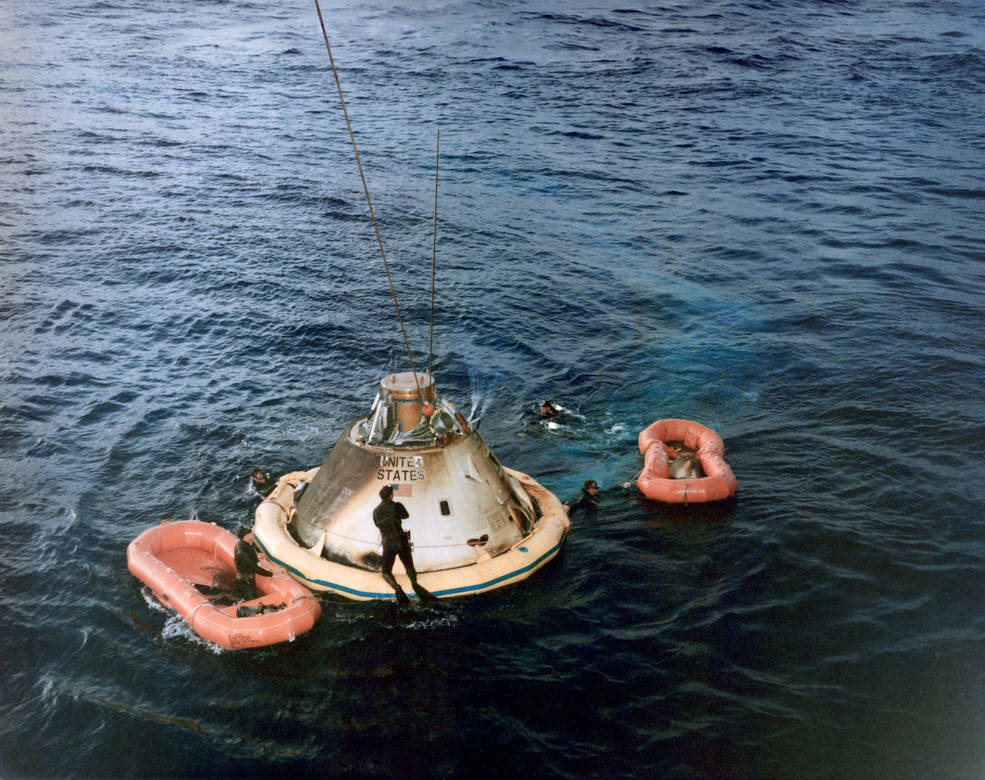
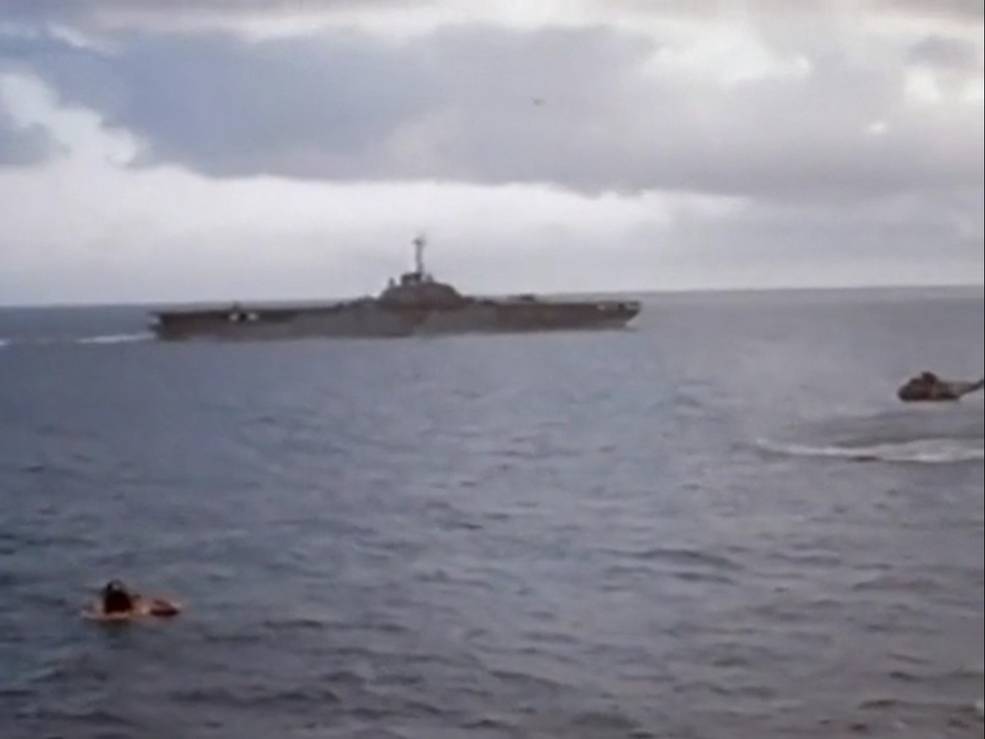
Left: Recovery swimmers from the prime recovery ship the U.S.S. Boxer (LPH-4) preparing the AS-201 Command Module (CM) for retrieval. Right: The U.S.S. Boxer approaches the CM for retrieval.
Swimmers from the prime recovery ship the U.S.S. Boxer (LPH-4) retrieved the CM and sailors hoisted it aboard the carrier about three hours after liftoff. The ship reached port in Norfolk, Virginia, on March 6. From there, it was flown to the NAA plant in Downey, California, for postflight inspections. Engineers used CM-009 for land impact tests at MSC in 1968. In 1973, NASA donated the capsule to the University of Nebraska at Lincoln where it resided for many years, eventually undergoing a restoration. The restored CM-009 from the AS-201 mission is on loan to the Strategic Air Command and Aerospace Museum in Ashland, Nebraska, where it is on display.
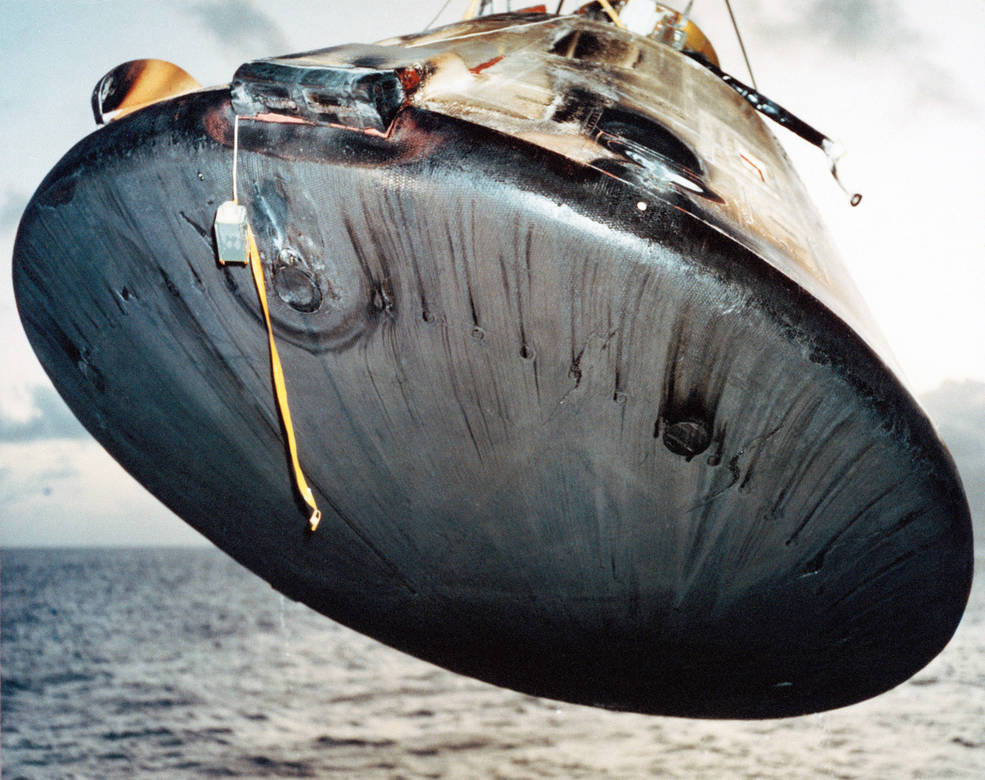
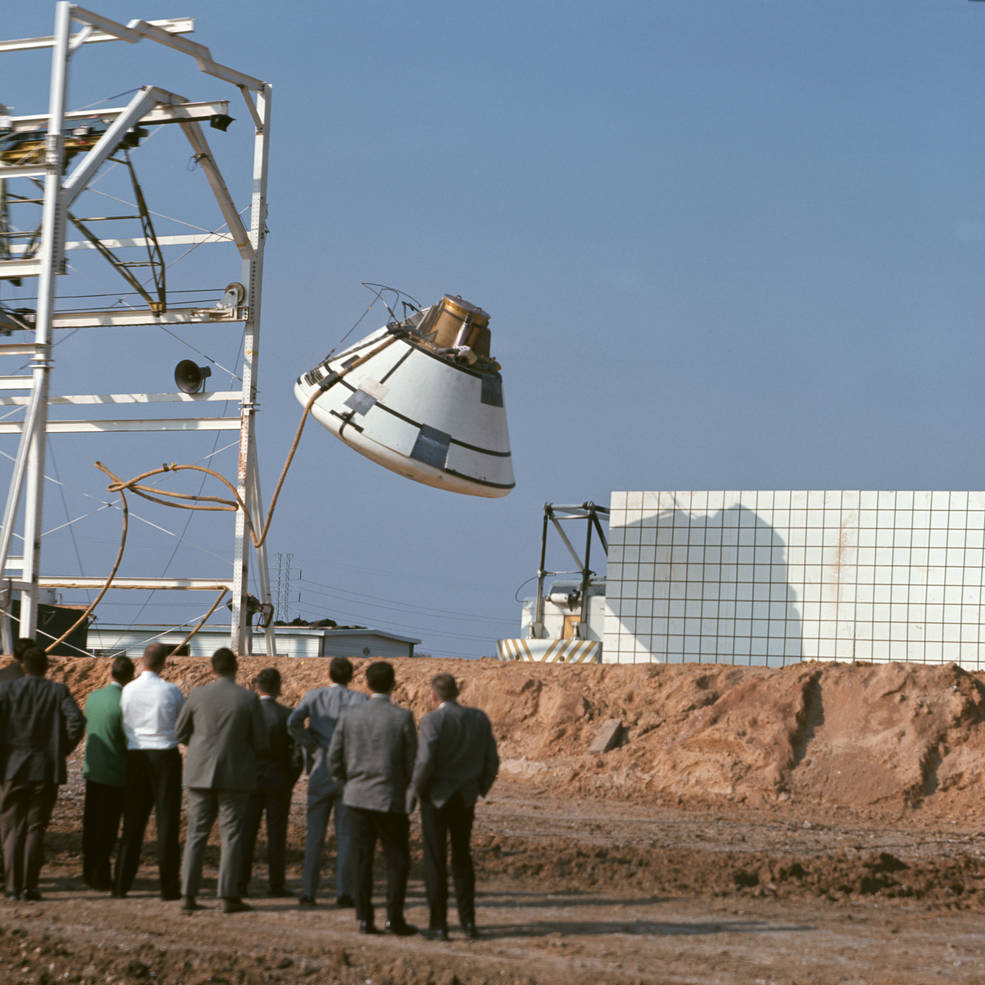
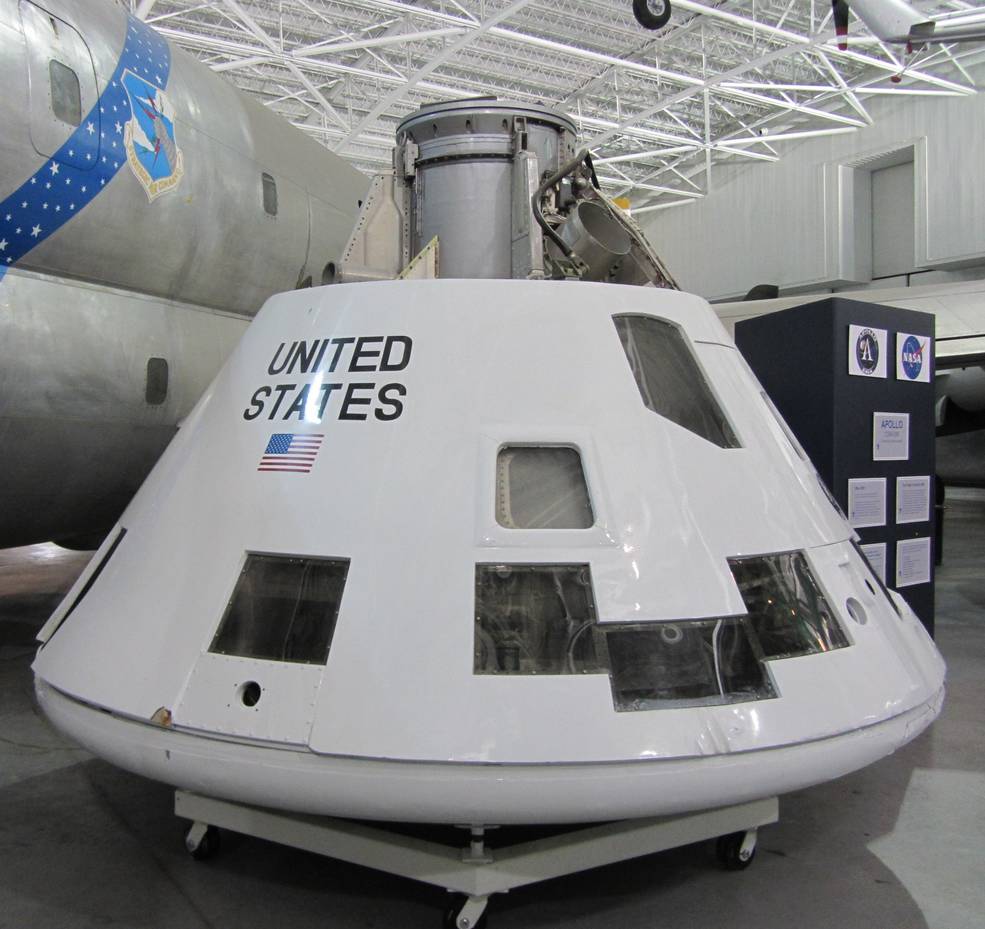
Left: The heat shield of the AS-201 CM displays scorching from the heat of reentry as sailors on the U.S.S. Boxer lift it out of the water. Middle: CM-009 used for land impact testing at the Manned Spacecraft Center, now NASA’s Johnson Space Center in Houston, in 1968. Right: The restored AS-201 CM-009 on display at the Strategic Air Command and Aerospace Museum in Ashland, Nebraska.
Image credit: Strategic Air Command and Aerospace Museum.
At the time, NASA planned for two more uncrewed Apollo Saturn-IB flights to certify the rocket and spacecraft, followed by the first Apollo to carry a crew, possibly as early as early 1967. Those plans changed tragically on Jan. 27, 1967.
With special thanks to Ed Hengeveld and Gary Johnson for contributions to this article.










